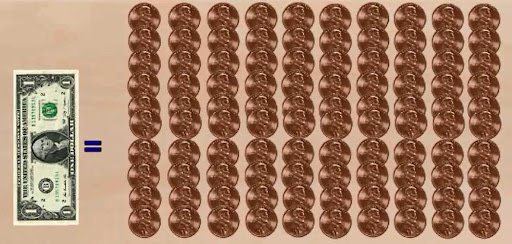80000 Pennies Is How Much,How Much Is 80000 Pennies In Dollars
The world has become so accustomed to using currency that it is almost unfathomable to envision a world without money. In such a scenario, barter trade might be the prevalent method of obtaining daily necessities, leading to intriguing exchanges like trading commodities for a trip to renowned destinations like the Maldives.
Thankfully, the introduction of currency has spared us from such cumbersome arrangements. Regardless of one’s location, whether it be the United States, the deserts of Saudi Arabia, the tropical forests of Africa, or the depths of an ocean, money serves as an indispensable medium for transactions.
The phrase “toil and sweat for food” now assumes a new guise, with people working diligently to earn money for their everyday requirements. Money, however, is a broad term, as every continent and country boasts its own distinct form of currency, each with varying monetary values against others. Hence, when planning a holiday or relocating to a different country, it is essential to acquaint oneself with their currency type and find a suitable place for currency exchange to ensure a seamless experience.
One such form of currency is the penny, a term likely familiar to most, if not all, individuals in their daily lives or from various media sources. But how exactly did the penny become a part of the global currency landscape? Let us delve into the historical details and shed light on this intriguing aspect.
Getting Acquainted with the Penny:
In essence, a penny is a coin, the smallest unit of currency indivisible further. Numerous countries incorporate the penny as part of their currency systems. In the United States, a penny refers to the one-cent coin, while the Irish utilize the term for the one-cent euro coin. Additionally, the term is used in Canada to denote the cent and in Britain as the penny.
The term “penny” has a broad application and can trace its roots back to the Carolingian system, akin to the French denier, Chinese fen, euro cent, or German pfennig. Presently, it constitutes an integral component of British currency, with one penny equating to 0.01 dollars.
A Glimpse into the History of Pennies:
Before delving into currency conversion scales, let us explore the origin of the penny. The penny originated from Scotland and was initially attested in a Scots text in 1394, bearing the name “peni.” Various versions of the name have since emerged, including “penning,” “pennig,” and even “pending,” the latter meaning something altogether different.
There is a recent proposal suggesting that the penny might have derived from the Carthaginian currency, the Punic, which bore the image of the Carthaginian goddess Tanit. The medieval silver penny bore resemblances to the Greek drachma, the Roman denarius, and the Carthaginian shekel. The first Carolingian-style pennies were minted by King Offa of Mercia, and significant currency reforms were implemented by Charlemagne’s father, Pepin the Short.
Various countries, like South Africa, initially used large-sized pennies, often referred to as the “Cartwheel penny” due to their size. Interestingly, the Capetonians dubbed it the “Devil’s penny” owing to the engraved symbol of Britannia holding a trident, evoking superstitions.
Charlemagne later introduced modest-sized pennies, which eventually became a crucial element in countries’ monetary frameworks worldwide, largely due to colonization. Before transitioning to bronze pennies, many nations initially adopted unpopular copper pennies. While the British continue to use the penny, countries such as the United States, Canada, and Scotland utilize it on a smaller scale.
The Value of 80,000 Pennies:
For those contemplating world travel in 90 days, familiarizing oneself with different countries’ currencies becomes essential for a smooth journey. Stranded on foreign soil without an understanding of the language or difficulty accessing essential resources may seem like a nightmarish scenario.
For individuals carrying 80,000 pennies, knowing the subsequent value in dollars, as most transactions are conducted in dollars rather than cents, is vital, especially in the United States. Carrying a bag filled with 80,000 coins to the bank may inadvertently give off an impression of being a wealthy benefactor. However, the reality is that 80,000 pennies amount to 800 US dollars, which, while it may seem substantial, might not suffice for daily living expenses such as housing, food, and other bills that are ubiquitous in our civilization.
Even if one chooses to relocate to Canada, the difference is not substantial, as 800 US dollars equate to approximately 1,026 Canadian dollars, still considered a modest amount compared to daily expenses. Nevertheless, 80,000 pennies can make a notable difference if one lives with family or shares expenses with a friend.
Final Thoughts:
In conclusion, the world’s reliance on currency has revolutionized commerce, rendering the use of barter trade obsolete. Currency exchange rates play a crucial role when crossing country borders, and awareness of different currencies becomes vital for international travelers and relocations.
For those intrigued by pennies, the article sheds light on the historical origins and significance of this small but essential unit of currency. Ultimately, understanding currency values and conversions facilitates seamless travel and financial management in various countries, making for a more enriching and rewarding experience.
